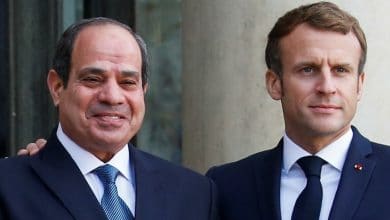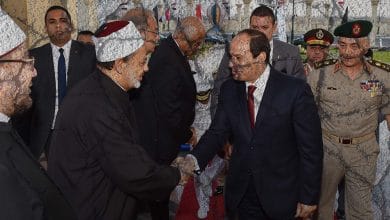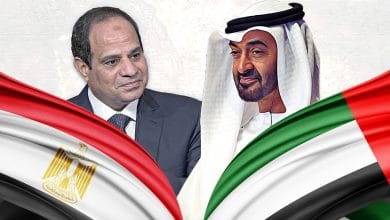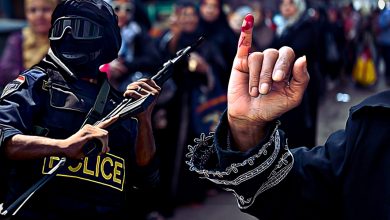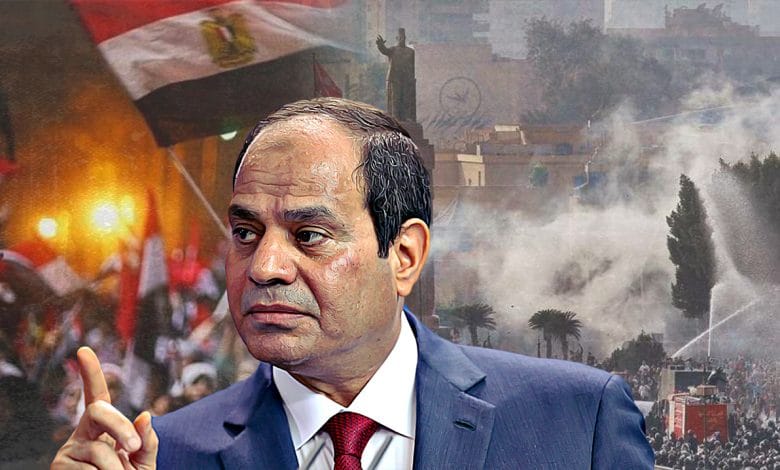
Assessment of the January Revolution (2011) and the situation in Egypt in general, necessarily requires addressing the revolution’s iconic slogan, “Bread, Freedom, and Human Dignity, before even referring to the demand of social justice that was added later, which is considered a structural dimension within the demands of bread and dignity. In fact, the basic Egyptian revolution demands focused on:
– The rule of law: in order to achieve justice and equal opportunities, and even progress, development and renaissance.
– Freedom: that guarantees two necessary criteria for any country to achieve real development and stability, namely:
a) Accountability of authorities, and
b) Allowing only efficient persons to assume responsibility.
– Bread: that refers to the demand for social justice, which is a structural criterion for development, where freedom secures achievement of social justice; and the demand for human dignity, along with the rule of law, also lead to social justice.
All these meanings are included in the iconic slogan of the January Revolution, “Bread, Freedom, and Human Dignity”; as there is no dignity without freedom or social justice; and there is no social justice without freedom and rule of law; and there is no freedom without dignity based on social justice and the rule of law. Perhaps this is what made this slogan the icon of the revolution and extremely dear to the hearts of Egyptians since it was first launched on January 28th, 2011.
Today, it can be asserted that none of the demands of the January Revolution has been fulfilled; and the question that this paper attempts to answer remains about the future of the January Revolution in light of this reality: What has remained of the Arab Spring revolutions and how can it be preserved?
The paper is divided into two main parts:
The first part attempts to review the perceptions of experts and observers towards the future of the January revolution or the Arab Spring in general.
The second part attempts to provide a reading of the Egyptian scene in particular after the 2013 coup, through:
a- Extrapolating the features and indications that may be behind deepening popular division in Egypt,
b- Reviewing the developments witnessed by the Egyptian political scene,
c- Tracing the regime’s pursuit to raze the Egyptian society of all sources of power.
The paper then concludes with provision of an outlook about the future of the political situation in Egypt.
First: Perceptions of experts on the future of the Arab Spring
In this regard, there are two visions: the first is external, which may seem pessimistic about the future; and the second is domestic, which is somewhat optimistic.
As for the first vision, it was presented by Steven A. Cook in in an article that he published in Foreign Policy on 5 September 2020, under the title, The End of Hope in the Middle East. “Given how widespread bloodshed, despair, hunger, disease, and repression have become, a new—and far darker—chapter for the region is about to begin,” he stated. In his article, Cook confirms that the hopes and predictions of observers and experts about democratic transitions in the Middle East following the “Arab Spring” are gone forever. Cook saw that Egypt’s failure in the “January revolution” as a chronic condition, as it has led to the advent of a general that represents the military elite to power through a military coup, which pushed Egypt towards a blunt state of the regime’s attack on society, and entry into the most bloody and oppressive period in the country’s contemporary history. “Sometimes state failure is a more chronic condition, as with Egypt, and since coming to power in a popularly supported coup in 2013, President Abdel Fattah al-Sisi has not only overseen a multiyear assault on society but initiated the bloodiest and most repressive period in contemporary Egyptian history,” he says. He also believes that the fall of Egypt led to the creation of a regional counter-revolution alliance that caused instability in a number of countries, along with the influence of regimes such as Saudi Arabia, the UAE and Iran, which in turn played a major role in the state of instability and failure of the Arab Spring in Yemen and Syria.
Cook points out that it was the claim of the military elite to rely on popular demands for interference in political affairs. “It was actually the work of generals who accomplished these feats while claiming—not disingenuously—a popular mandate to do so,” Cook stated. However, it led to an apparent state of contempt towards the Egyptian citizens, which makes the choice to use batons, rather, firepower, strongly proposed to get rid of popular pressure and keep matters under control. According to Cook, this in turn raises the possibility of renewed political turmoil, or leads to a second coup that may lead to a state of rupture, but he believes that such unrest cannot be predicted with respect to timing and manner. “People may rebel or there could be another coup signaling a possible rupture, but it is hard to predict when or how that would happen and what the result might be.”
In Cook’s view, Egypt has moved from intimidation of people using an “alleged internal enemy” or the Muslim Brotherhood, towards declaring Turkey as an “external enemy” , what Cook considered the “war question” that concerns experts and decision-makers in Washington, and the reason for this question was the growing Turkish influence over the Libyan neighbor, in addition to the eastern Mediterranean crisis, accompanied by the Turkish political leadership’s insistence on undermining the legitimacy that Sisi sacrificed Egypt’s future to achieve through pursuing recognition of his coup, in addition to several other issues, such as differences between the two countries in the Syrian and Palestinian files. In this context, Cook believes that Egypt, like many Arab Spring countries, suffers from the phenomena of contested identity, contested sovereignty, and an extremely poor way of governance, which makes its problems continue to exacerbate and difficult to predict the future, given the potential ruptures looming on the horizon. “All of these places have contested sovereignty, contested identities, and perpetually bad governance that constitute a vicious feedback loop from which there does not seem to be an escape,” he stated.
As for the internal -optimistic- vision, it was presented by the Egyptian academic Hassan Nafaa in an article he published on 26 December 2020 in the London-based al-Arabi al-Jadeed under the title, “The Arab World 10 Years After ‘Spring Revolutions’”. Dr. Nafaa believes that the Arab world is not a hopeless case with respect to democratic transformation, and that the process of transition to the democratic state is inevitably coming, but its fulfillment will take a long time and effort. He sees that the setback of the first wave of revolutions that started in early 2011 does not mean they died or completely ended.
In this regard, Nafaa demonstrates the outbreak of a second revolutionary wave that included Sudan and Algeria, and then a third one, including Lebanon and Iraq, expecting that similar waves will follow until the structure of Arab societies matures and becomes susceptible to democratic transformation. But Nafaa’s approach is conditional on eruption of one of these waves in the Arab Gulf region, especially the rich oil countries.
Nafaa’s proposal comes within the framework of what he referred to as the entrenchment of tyranny in the Arab political structure, and its penetration of its political, security, economic, social and cultural institutions, as unemployment, marginalization and inflation are still the same as they had been before in Tunisia, the only country among the Arab Spring countries that has succeeded in its democratic path. Those are the same issues that sparked protests in 2011, while the country’s political class is preoccupied with sharp political differences.
What Nafaa relies on in demonstrating that change is coming is the fact that most of the ruling elites at the current stage do not derive their authority from the popular will reflected in the ballot boxes, but that they depend for their survival on foreign powers. Therefore, they are practicing policies that may not enable them to find real solutions to the economic and social problems, having nothing to do but to practice more repression and tyranny in the face of the urgent demands of their peoples, which is likely to put them, sooner or later, in an unavoidable dilemma.
Nafaa draws a track towards the future through two main paths: The first is that the ruling elites may be able to change their policies and orientations, and be more open to other segments of the political and intellectual elites. As for the second path, it is represented by elites that have an interest in changing the status quo, as they would be forced – in his view – to get rid of the state of fear in which they are living, or from the state of rupture and dispersion that they are going through, and review their mistakes and present a common vision for change that is more mature, and more likely to respond to the aspirations of their people.
Despite the difference in the position of both Cook and Nafaa regarding the likeliness of change, the two men agreed on a number of features, which can be summarized as follows:
A. The state of uncertainty towards the future, as the two visions agreed on the existence of a state of uncertainty.
B. There is evidence of peoples’ awareness of their potential, as observers see that the Arab peoples over the past decade have realized that they can change their reality. Observers unanimously agree that the recent waves of protests in Sudan and Algeria, and then in Iraq and Lebanon, are the fruits of this state of popular awareness of their ability to change. In Egypt, this was evident in the 20 September protests in 2019, which is an indication – as estimated by the researcher – that the Egyptians are ready to take to the street when objective conditions are provided. In Algeria, protesters during the 2019 protests remained in streets even after the departure of former President Abdelaziz Bouteflika, refusing to repeat the mistakes of their Egyptian counterparts who left Tahrir Square after 18 days of protests when Mubarak stepped down.
Previous considerations prompted President of European Institute for International Law and International Relations Dr. Mahmoud Refaat to say that it cannot be assured that the Arab Spring has completely failed. He sees that the extent of devastation in Syria, Libya and Yemen, may push the peoples to retreat before rising again. Refaat believes that there is a state of despair 10 years after the outbreak of the Arab Spring, especially amid the recent move by some Arab countries for normalization with Israel, which may cause an uprising at any time, given the fact that the Arab people have nothing to lose.
C. There is lack of internal legitimacy of the post-3 July regime: It is noteworthy that the two approaches towards the future, both the pessimistic and the optimistic views (of Cook and Nafaa), believe that the counterrevolutionary regimes suffer from a legal crisis, and that they seek to escape from this crisis by fabricating internal and external problems, where they would not be able to survive without external support. As for the differences between Cook and Nafaa, they are due to the difference in the cultural position of the two ideological approaches, namely:
– Attention to the international factor: Intellectuals belonging to the region are concerned with the international situation as one of the key factors that led to failure of the Arab Spring in general, and the January revolution in particular. The well-known phrase of Trump about his ‘favorite dictator’ is an iconic phrase describing the American position in particular, and the European position in general towards the Middle East.
On the other hand, thinkers across the world ignore the effect of the external factor in toppling the hopes of the Arab peoples, unlike human rights defenders, as well as the regional reform thinkers who view this factor as an important factor in enabling the axis of counter-revolution, even if they see that the internal factor was decisive in reaching the setback suffered by the aspirations of the peoples of the region to get rid of the factors of material and moral impoverishment.
– The attitude towards the geopolitical dimension: There is another difference between the two approaches, as thinkers across the world are more concerned with the geopolitical dimension than the internal dimension in their assessment of the Arab Spring. On the other hand, reform thinkers appears to be more concerned with assessing internal political factors than with the geopolitical dimension in this regard.
Second: A reading of the political scene in Egypt
The features of the current scene in Egypt include:
A. Continued sharp popular division: The continued deterioration of the current economic and social situation in Egypt has led to various reactions that worsened the sharp political division in Egypt despite the efforts made by Abdel Fattah Al-Sisi to empower himself and the loyal elites of his regime. The features of this division can be monitored through the so-called elections of the “House of Representatives” (lower chamber of parliament) in 2020, the first elections after the amendments to the Egyptian constitution in 2019 that ensured that Sisi would remain in power until at least 2030, the creation of another legislative chamber, the Senate (the upper chamber of parliament).
It was striking that the turnout of the 2020 Parliament elections was low, as, according to official data, only 18 million and 359 thousand voters participated in these elections out of a total number of 63 million and 157 thousand voters, a turnout rate of 29%. This low turnout reflects continuation and stability of the state of division that Egypt has been experiencing since the July 2013 coup.
B. Development of the mobilization of the Egyptian political forces: The Egyptian political scene has moved from the square of resistance to the square of contrasting orientations. The period that followed the Rabaa and Nahda massacres and others, and then Sisi’s presidential election in 2014, witnessed resistance to the post-coup regime, as features of the Egyptian opposition were characterized by the following:
1. The Egyptian opposition was divided into two main parts, where the first adopted a right-wing approach, including both Islamic and left-wing nationalist orientations. With convergence of these two trends, they together launched several joint initiatives that the researcher reviewed in a previous study, including the initiative of Hamdeen Sabahi, “Let’s make an alternative” or that of Ibrahim Munir, “The Elders of Egypt”, as well as the initiatives of Ambassador Ma’soum Marzouq and Lt. Gen. Sami Anan. Also, there were other several independent initiatives, most prominently the initiative of the well-known Egyptian scientist, Essam Heggi. In this context, the momentum resulted in forming the so-called “civil democratic movement” as a framework or umbrella that attempted to be a grouping of the civil movement components. On the other hand, several media outlets were established abroad to express opposition to the Sisi regime, such as the Mekameleen, Al-Sharq, and Watan TV channels, some of which are affiliated with the Brotherhood and some adopt more progressive discourse.
2. Recalling the Spanish model: On the other hand, the Egyptian liberal and liberal left currents began to call for building self-power so that the civil movement would be able to manage negotiations with both the Islamic trend and state institutions.
3. Sisi regime’s reproduction of the model of the National Democratic Party (NDP), the ruling party during the Mubarak era, where security and political cadres created the “Nation’s Future Party”, on the footsteps of Mubarak’s ruling NDP.
4. Expansion of the range of arrests within civilian circles, such as the arrest of the so-called “Hope Cell” and the arrest campaign of the “September 20” movement’s lawyers, in addition to the arrest of a large number of Egyptian public figures, including Ambassador Ma’soum Marzouq, Councilor Hisham Geneina, Dr. Abdel Moneim Abul Fotouh and the Eng. Yahya Abdel Hadi, and several Egyptian symbols and public figures.
With the constitutional amendments, and the continued imprisonment of Egyptian political leaders, the most important features of the Egyptian political scene included:
1. Dwindling initiatives:
With the constitutional amendments coming out to the public, the continued imprisonment of the Egyptian political leaders, and the attempt of the Sisi regime to export the image of the flare-up of confrontation between Egypt and Turkey, thus considering any agreement with opposition overseas as a form of treason, the Egyptian situation was stagnant. However, the Egyptian opposition are still hoping that the West may support it, especially with the advent of the new American president, Joe Biden. A sector of the national political forces may await the outcome of the likely security contacts between Turkey and Egypt.
It can be said that this stagnation came in contrast to the trend of the Egyptian public towards ignition of the situation, whether through the September 20, 2019 protests or through the movement to stop building violation procedures in September 2020.
2. The post-July 3 regime reproducing the Brotherhood’s model in cooperative political work:
On the other hand, while the post-July 3 regime used to reproduce experiences, the ruling regime party, “Nation’s Future Party”, tended to reproduce the experience of cooperative political work with non-national political forces, through hosting a number of different parties on its electoral list.
C. Draining the sources of community power:
Regardless of the Sisi regime’s approach related to the Emirati position on the Brotherhood and its demonization of the group, nothing but to prevent its feared influence on society with regard to its efforts for the society’s empowerment, the regime has worked to dry up any source of community support, and it has replaced it with new sources of support for society, but in the direction of tightening the state’s grip on it, not for the sake of emancipating or empowering it.
Examples of this include:
The businessmen category has been contained, as businessmen have been stripped of any kind of ownership of media outlets, in addition to tightening the security grip on a large number of businessmen, such as Salah Diab and Safwan Thabet, and others, to prevent any political role that might be played by businessmen, with the exception of a group of businessmen known to be implicated in corruption cases, such as businessman Mohamed Abul Enein who has recently become the Egyptian Parliament deputy speaker.
– The Non-governmental organizations were shackled by the enactment of Law No. 149 of 2019 on regulating the practice of civil work, as the law restricted any practice of any civil work activity without forming an association, imposing exaggerated fines up to one million Egyptian pounds in some penalties, as well as prohibiting associations from receiving any funds from any natural or legal person other than the sources of its financing stipulated in the permit issued to it, except after the approval of the competent minister alone.
– Exercising pressures on the Grand Sheikh of Al-Azhar to subjugate him, after subjugating both the Minister of Wakfs (endowments) and the Mufti and using them to pressure the Al-Azhar Foundation.
Conclusion:
There are several indicators of future paths, some of which are internal indicators and others external ones:
** The key external variable is the attitude of the new US administration towards Egyptian regime which is likely to be confined to only imposition of “rhetorical” controls on the regime’s handling of human rights issues, without exercising real pressure, given Egypt’s geopolitical significance.
– The crisis of the Italian researcher “Giulio Regeni”, as development of the Italian attitude towards it may lead to practice of pressure on the Egyptian regime, as happened with respect to the position of the European Parliament during December 2020.
– The Turkish factor that represents the most prominent regional challenges to the Egyptian regime.
– Current data include other variables that may lead to dangerous future developments, including the issue of the Grand Ethiopian Renaissance Dam (GERD).
– The economic crisis monitored by the International Monetary Fund related to the Egyptian economy poor ability to grow due to the escalating economic role of the military institution; the effect of the accelerated Egyptian armament; in addition to the new alternatives to the Suez Canal and their likely negative effect on it, including: Ashkelon / Haifa pipeline, Dubai / Haifa railway, Istanbul / al-Faw railway, and Istanbul / Beijing railway.
Most of the above factors have a dual effect, as each one includes weaknesses and shortcomings, as well as strengths and readiness to undertake changes, such as the likely Western pressures in general, the economic situation, the hostile discourse towards Turkey, and the tireless work of Egyptian diplomacy. On the other hand, the Covid-19 pandemic and the new alternatives to the Suez Canal only bear absolute negative effects on the situation in Egypt.
** As for the likely internal changes seem less effective at present, given the fact that there are numerous difficulties that the internal front is facing, amid presence of a large number of political action leaders in prisons and the state of silence that damages the initiatives of public figures. The economic variable appears to be the most capable element for influencing the future, despite observers’ vision of the regime’s readiness to expand the scope of repression and its tools to control any popular mobilization, given the fact that the latter along with the ability of the power wings to employ it, is one of the most important factors that could surprise observers.
To Read Text in PDF Format Click here.